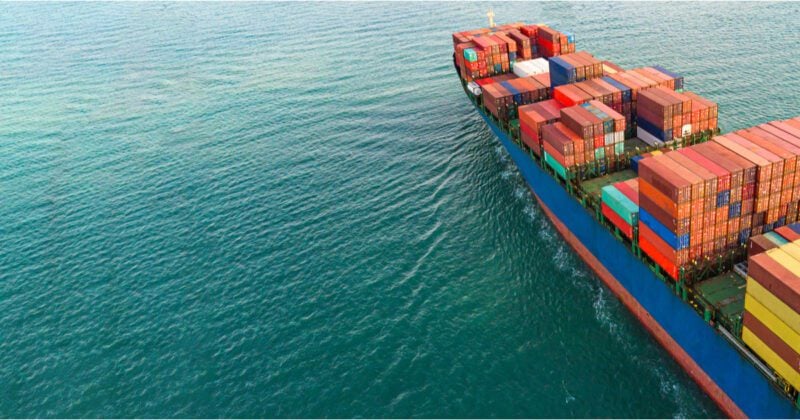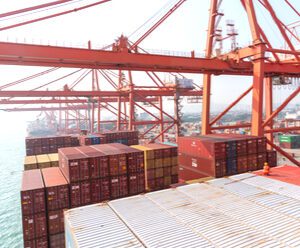
Forecasting shipping requirements will be vital to securing capacity

The goalposts marked ‘return to normalcy’ and ‘container shipping’ have been an ever-retreating blur for over a year.
The final quarter of the 2020 ‘seasonal lull’ failed to materialize. Chinese New Year 2021 was supposed to be another reset opportunity, but that too passed without major improvement in scheduling reliability or any meaningful subsidence of freight rates.
Q3 2021 was the next target for carrier executives hoping to get equipment and ships back in position. However, demand remained high through summer before the peak season delivered further price hikes and service disruption.
Global schedule reliability in August dropped to an all-time low of 33.6%, according to shipping analyst firm Sea-Intelligence. The most visible sign of the shipping logjam was the queue of 70 container ships off the coast of Long Beach and Los Angeles terminals at the end of September. Some vessels were stuck in queues for over three weeks, waiting to unload at North America’s premier box gateway.
But the problem of port congestion has not been confined to the U.S. West Coast. Vessels Value reported that over 400 container ships were in queues at ports worldwide last month, a situation that was worsening with every passing day in September.
Shifting the focus to key East-West trades
Due to rising rates on the key East-West routes from Asia to Europe and the U.S., carriers have diverted capacity as they seek to maximize profit. According to DHL’s latest Ocean Freight Market Update, the share of the global cellular fleet deployed on the Asia–Europe and Asia–North America trades increased from 34.6% on 1 July 2020 to 41.4% on 1 July 2021. Meanwhile, Trans-Pacific capacity rose 30.6% year-on-year.
“The shortage of capacity in the Far East–Middle East trade is not only a result of port congestion; many ships have been redeployed to the main East–West routes to meet the strong cargo demand and hopefully ease freight rates,” said Dominique von Orelli, Global Head, Ocean Freight, DHL Global Forwarding.
The strategy to focus on the key East-West routes has been enormously successful for carriers, which are now expected to make earnings before interest and tax of US$150 billion (€130 billion) in 2021. However, shippers elsewhere have felt the repercussions of ships and equipment being sucked onto the most profitable lanes.
For example, trans-Atlantic shipping freight rates have spiked while the Far East-Middle East service has seen reduced capacity. None of the dedicated Central China–Middle East services operated by the largest container lines currently offers weekly sailings. On 14 September, 29 ships were deployed on these services compared to the 50 ships Alphaliner calculates are required to meet pro forma schedules.
As a result, almost half of all sailings on this route have to be blanked, as the services lacked 40% of the pro forma capacity. On top of that, additional ships are required, as vessels can no longer complete a round trip in seven weeks due to port congestion and long waiting times at anchorage.
With an equipment shortage in place, there is an ongoing competition for the same containers as higher paying trans-Pacific eastbound and Far East westbound routes. “Asia Pacific to Latin America services are seeing strong demand as economies rebound, thus the focus is to match the demand with equipment,” said von Orelli.
Cautious optimism for 2022
With demand showing no respite and constant shocks driving up freight rates and taking capacity out of networks, optimistic eyes are now turning to 2022.
“The global supply of boxes is improving as more new containers enter circulation,” noted Kelvin Leung, CEO, DHL Global Forwarding Asia Pacific.
But this should be tempered with caution, as Chinese production lines might be impacted in the run-up to the Chinese New Year and the Beijing Winter Olympics. With both events falling in February next year, factory shutdowns are possible to cut emissions.
“Back in 2008 before the Olympics in Beijing we saw shutdowns to reduce emissions and improve air quality. It is not out of the question that we could see this again ahead of the Winter Olympics,” said von Orelli.
Thus, it is expected that demand will increase for China’s exports as customers rebuild global inventories ahead of Chinese New Year factory closures. However, there is a chance that output will be constrained in the lead-up.
Leung adds that while there is strong demand, the market will not see a significant influx of new ships until 2023. “Therefore, I expect many supply chain challenges to continue in 2022 and we won’t see a return to a pre-Covid-19 state. But I do expect the situation to improve as some current bottlenecks ease,” said Leung.
To be well-prepared, Leung notes that advanced planning in supply chains and production schedules is essential. “Other than planning, customers should also look at all their logistics options. The better they can forecast their requirements, the easier it is for us to help them secure capacity and ensure they receive best-in-class services,” said Leung.
ALSO WORTH READING













 English
English